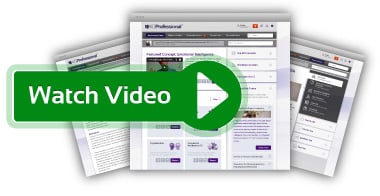Personal Development Plans
Technique Overview

Personal Development Plans Definition
A Personal Development Plan (PDP) is a form of portfolio assessment embedded within a larger development cycle. The PDP is also known as personal education planning (Evans et al., 2002), personal learning planning (Walker et al., 2003) and personal action planning (Challis, 2000). It is produced by identifying learning needs, often in collaboration with a tutor, appraiser or colleagues. Learning and professional development opportunities are selected to address the learning needs and later they are reflected upon by the learner and appraiser.
Personal Development Plans Description *
* The full technique overview will be available soon. Contact us to register your interest in our business management platform, and learn all about Personal Development Plans.
Business Evidence
Strengths, weaknesses and examples of Personal Development Plans *
* The business evidence section is for premium members only. Please contact us about accessing the Business Evidence.
Business Application
Implementation, success factors and measures of Personal Development Plans *
* The business application section is for premium members only. Please contact us about accessing the Business application.
Professional Tools
Personal Development Plans videos and downloads *
* The professional tools section is for premium members only. Please contact us about accessing the professional tools.
Further Reading
Personal Development Plans web and print resources *
Personal Development Plans references (4 of up to 20) *
- Beausaert, S., Segers, M., Fouarge, D. and Gijselaers, W. 2013. Effect of using a personal development plan on learning and development. Journal of Workplace Learning. 25(3), pp. 145-158.
- Beausaert, S., Segers, M. and Gijselaers, W. 2011. The use of personal development plan and the undertaking of learning activities, expertise-growth, flexibility and performance: The role of supporting assessment conditions. Human Resource Development International. 14(5), pp. 527-543.
- Bunker, A. and Leggett, M. 2004. Being wise about teaching portfolios: exploring the barriers to their development and maintenance. In: Sheehy, F. and Stauble, B. eds. Transforming Knowledge into Wisdom: Holistic Approaches to Teaching and Learning. Milperra, NSW: HERDSA, pp. 92-101.
- Challis, M. (2000) AMEE Medical Education Guide No. 19: Personal learning plans. Medical Teacher, 22, 3, 225-236
* The further reading section is for premium members only. Please contact us about accessing the further reading.
Learn more about KnowledgeBrief Manage and how you can equip yourself with the knowledge to succeed on Personal Development Plans and hundreds of other essential business management techniques

